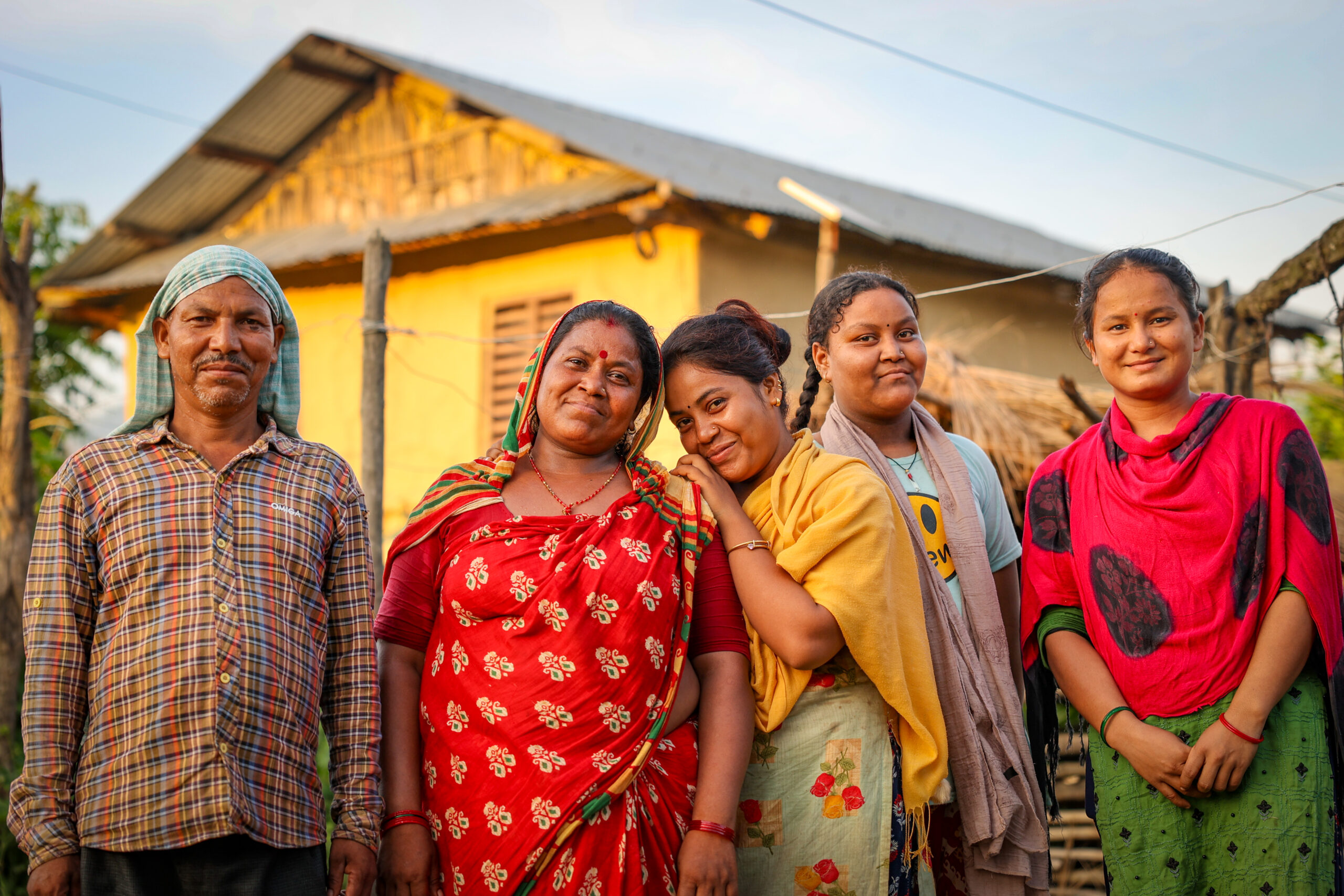Rising above the floods of climate change in Nepal
A mother’s story of a low-tech solution that saves her community
It’s one thing to experience a flood that damages your home. It’s a different thing altogether to experience more than five floods in just a few years, as Jit Kumari Bishwokarma, a mother of five, has experienced in her community in Nepal.
Nepal ranks in the top 10 most climate-vulnerable countries in the world and is highly prone to earthquakes and a range of water-related hazards such as floods, droughts and landslides. What is happening to Jit is happening to thousands of families in Nepal.
Floods causing loss and damage
It wasn’t always like this for Jit.
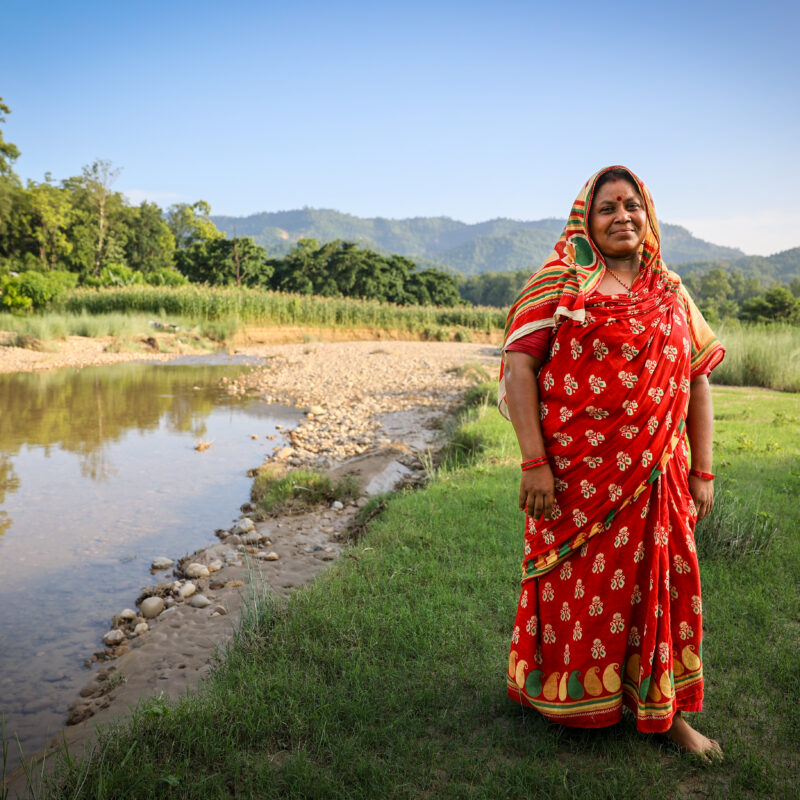
“Growing up as a child, I never saw any damage done by floods, but things have changed. As I grew up, I could see more water entering the village. I don’t know the exact cause of it, but just to give an example, last year when the water entered the village, we had to leave our flooded home and go somewhere else. We couldn’t even pack any food. I lost about ten goats that I was rearing.” – Jit
“If the water would enter my home, the kitchen would be under water, it would be up to the second-floor window level, above my head. My bed would look like a boat swaying. This house itself, I’ve renovated it more than four times.” Jit
It’s not just her home that is at risk from floods, but also her food and safety.
"We want to save the food supplies and resources we have, but as the water level increases, we carry the food with us. But at one point, it’s more about ‘Do I save myself or the food?’ So, a lot of times we have to let go of the food and think more about our safety."
— Jit
A simple idea to reduce flood risks: sandbag embankments
Despite the challenges, Jit is not one to be easily defeated. With assistance from the pilot “Emergency Preparedness and Resilience Project” (EPRP), initiated by Catholic Relief Services (CRS) with funding from Margaret A. Cargill Philanthropies, she has been fighting back against the destructive forces of nature. The tools and approach her community are using are not expensive, high-tech solutions: they’re using a simple approach that is effective and sustainable.
The EPRP, in collaboration with local partners and communities, has been building sandbag embankments to reduce the flood vulnerabilities of six at-risk communities in the Banke district. Using locally available materials such as sand, bags, bamboo and native plants, they are using a nature-based solution to reduce the risks of extreme floods for their communities.
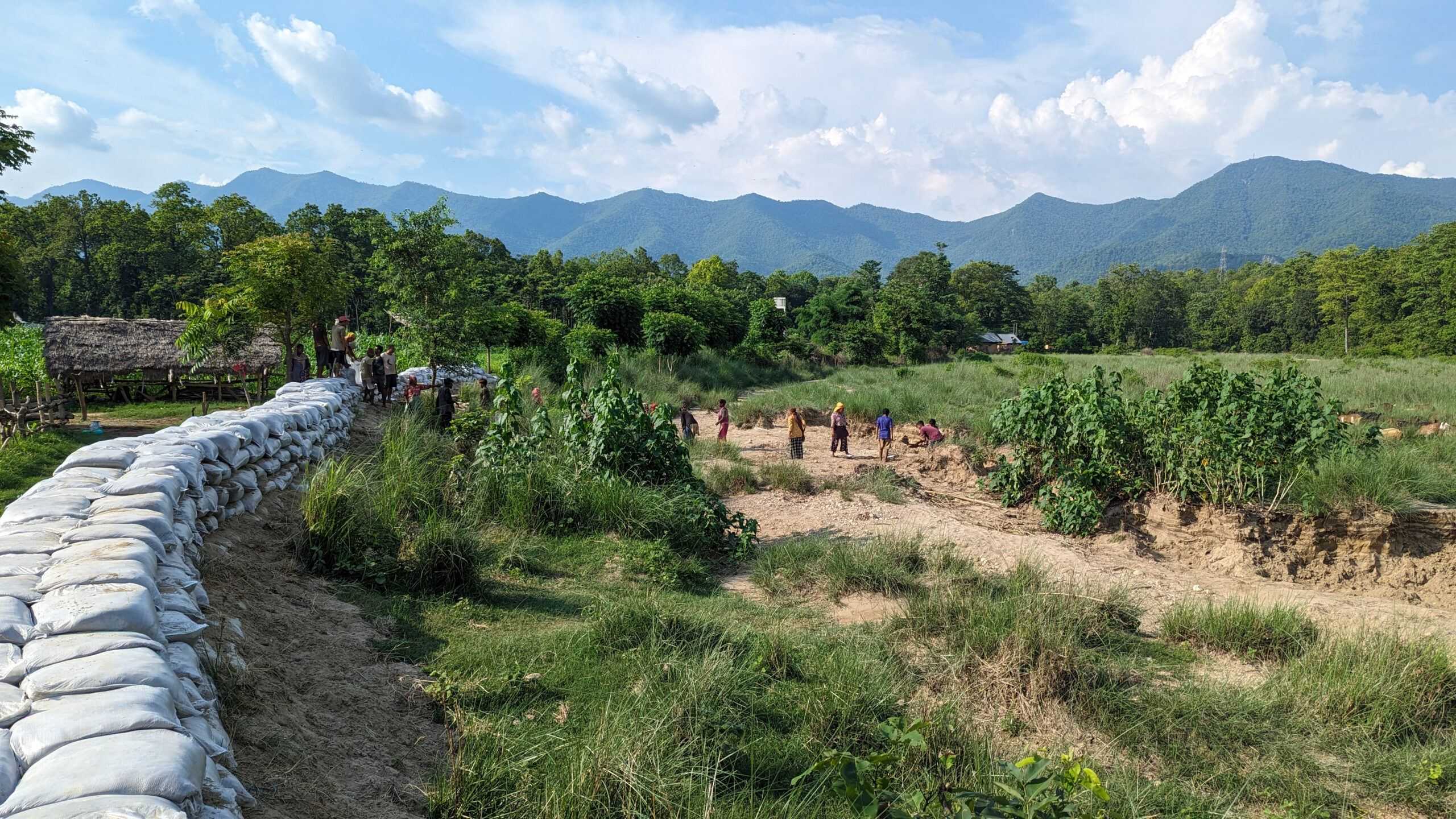
Jit’s village is one of these communities, and her family also played a significant role in this community-led effort. Her daughter and daughter-in-law dedicated their time and energy to the project, working for 12 days to build the retainer walls alongside the community. They volunteered their labor for two days, and for the remaining 10 days, CRS compensated them. The labor pay, set by the government, averaged 5,000 rupees per person, roughly $50 USD. This ensured that everyone involved was treated equally and fairly.
“I was very happy to contribute in some way, whenever I would see some work that needed to be done, I would volunteer. I always encouraged people saying, don’t think that you’re just going there to work for money, think that you’re working for a cause. You’re working for yourself to ensure that your safety comes first.” Jit
Ensuring long-term sustainability of sandbag embankments
The sandbag embankments have already made a difference.
“The sandbags have stopped water from entering the village and the community people feel safer. It’s monsoon and you don’t see water up here, that’s a huge difference. Before, the water would be coming right here.” Jit
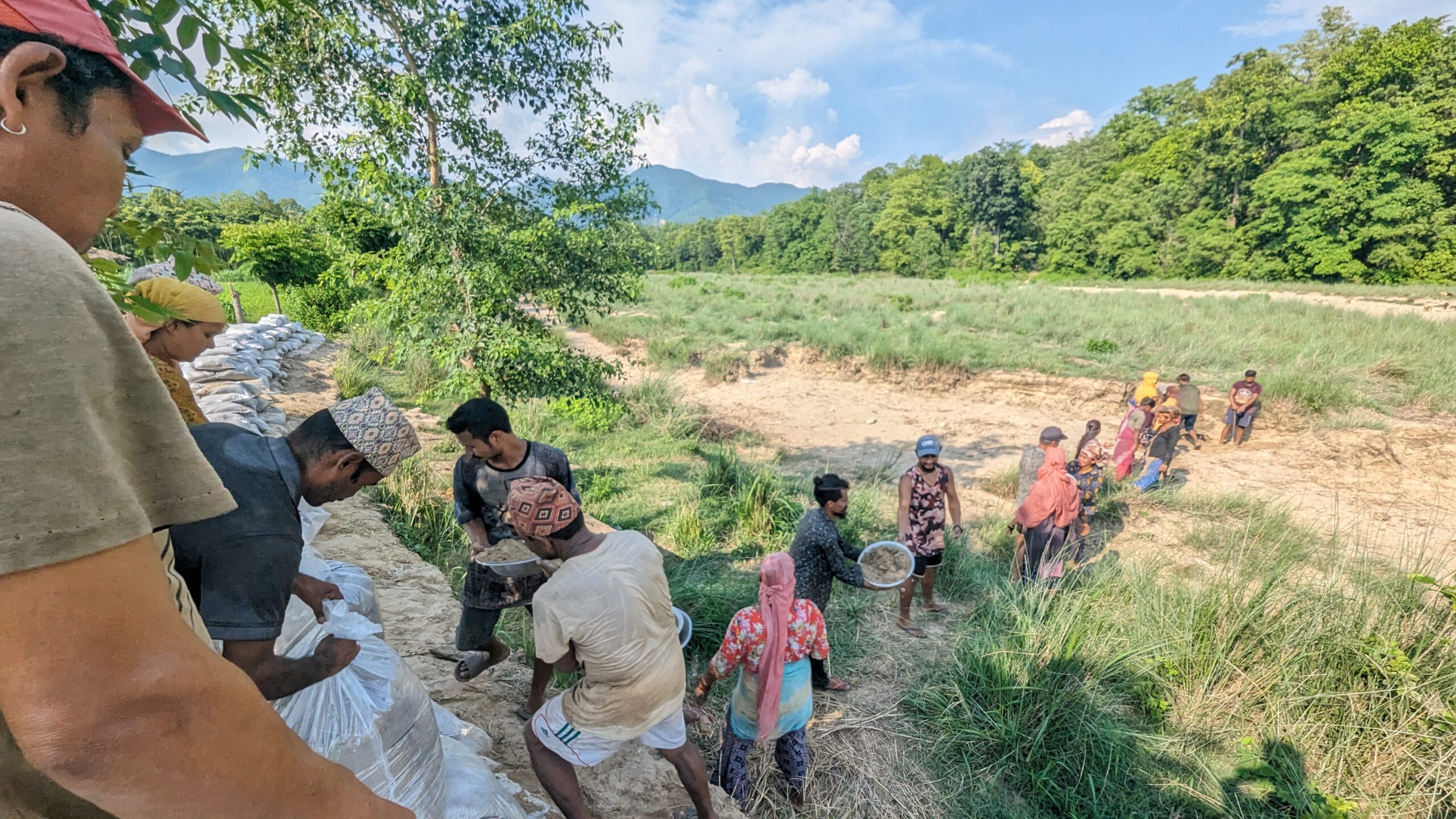
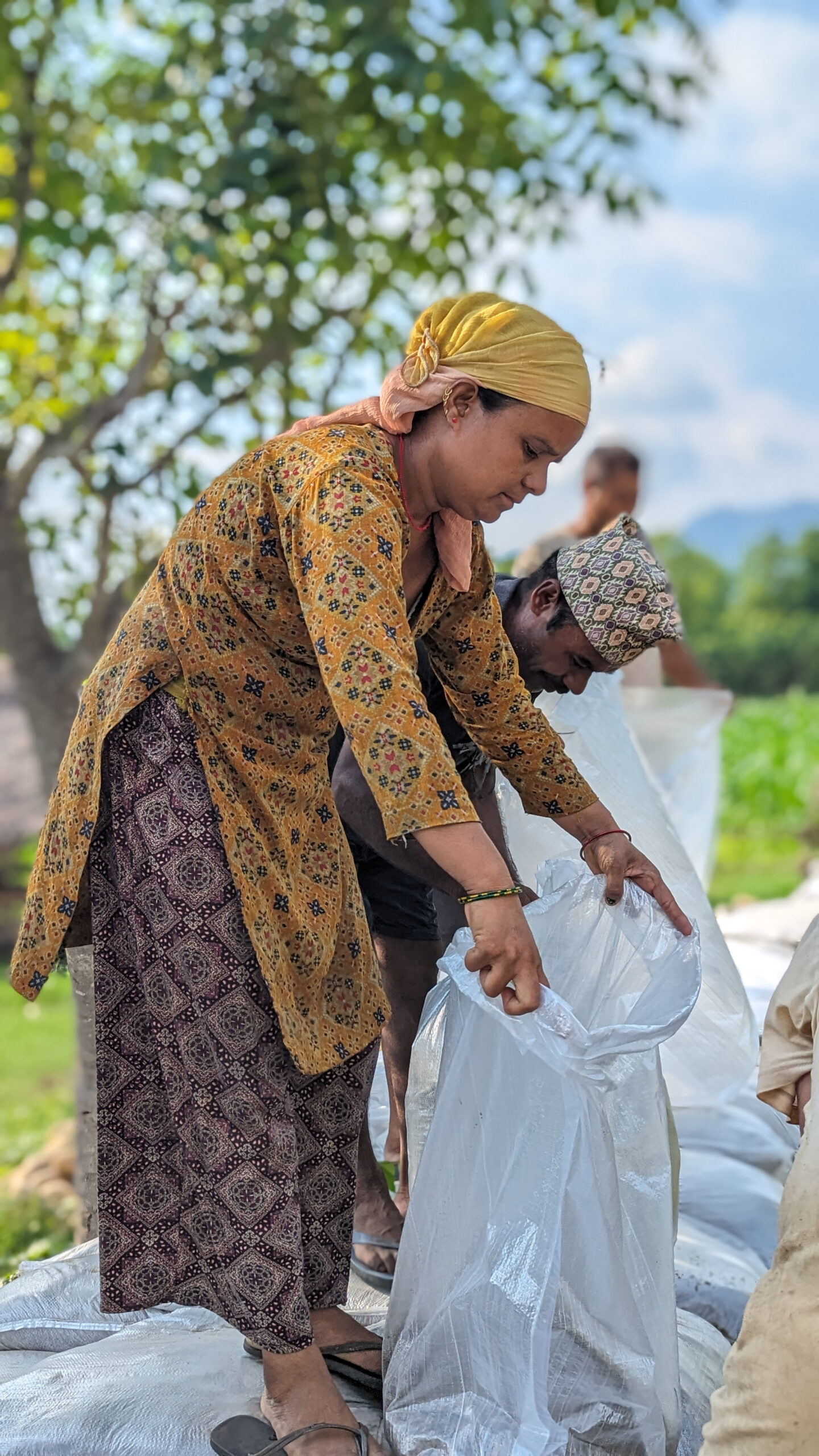
Although the sandbag embankment is completed, Jit continues to be active in the community by planting trees around the sandbag embankment to stabilize and ensure its long-term sustainability. “Through technical know-how from CRS engineers, we were told that the more trees you plant around the sandbags, the more stable the soil becomes,” said Jit.
“Since I live near the riverbank, I’ve taken this a little personally. I plan to plant at least 100 trees around the riverbanks. We were taught that once you put the sandbags down, it’s good to plant trees, especially bamboo, to stabilize the ground. So, I have already gone there, and I planted some trees.” Jit
Building bridges between neighbors
This collective effort not only fortified their homes against future floods but also fostered a sense of unity and shared purpose within the community.
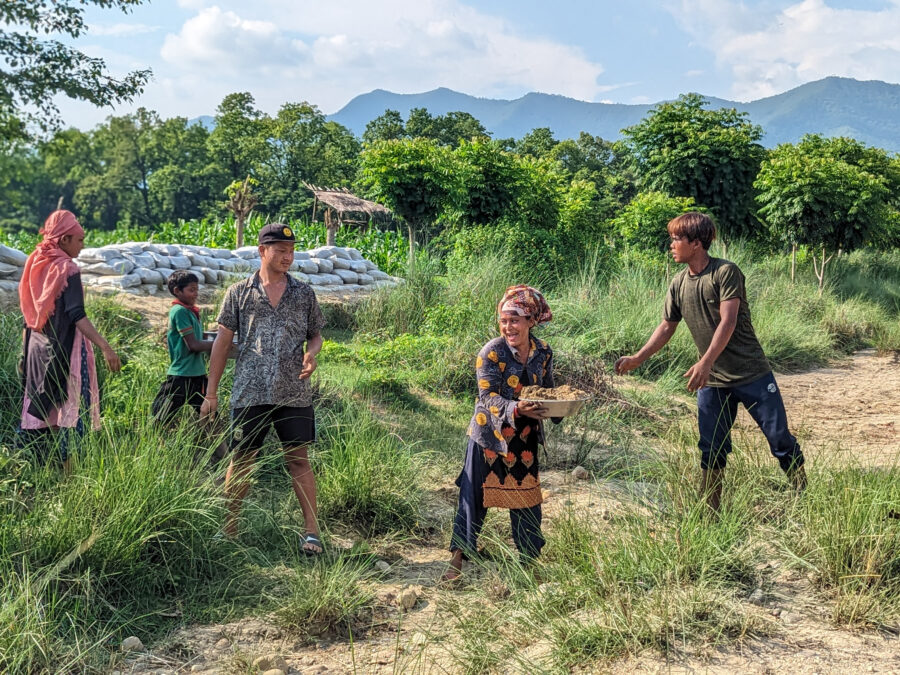
“Our country is made in a way that there’s a caste system in place. We feel a little neglected by the community…because we are from the lower caste in terms of our ethnicity, so we feel ignored. But at the workplace, when everybody from different castes were working together, it felt good.” – Jit
“Before people would not drink the water I gave them because I come from a lower caste. But when they were working, I took water to give them. Everybody drank the water, which was one of the best feelings for me.” Jit
Scaling up to other affected communities
In Banke district, the pilot project is also helping to mobilize flood preparedness and mitigation through capacity strengthening of over 120 Disaster Management Committee members in the targeted communities.
Although Jit is thankful that her family and community are now safe and protected, she is also mindful of other communities in similar predicaments. “There are other people like me living along the riverbanks who need similar support. This is something that we can reach out to the government to think about: other community members who, like me, are in flood-prone areas,” said Jit.
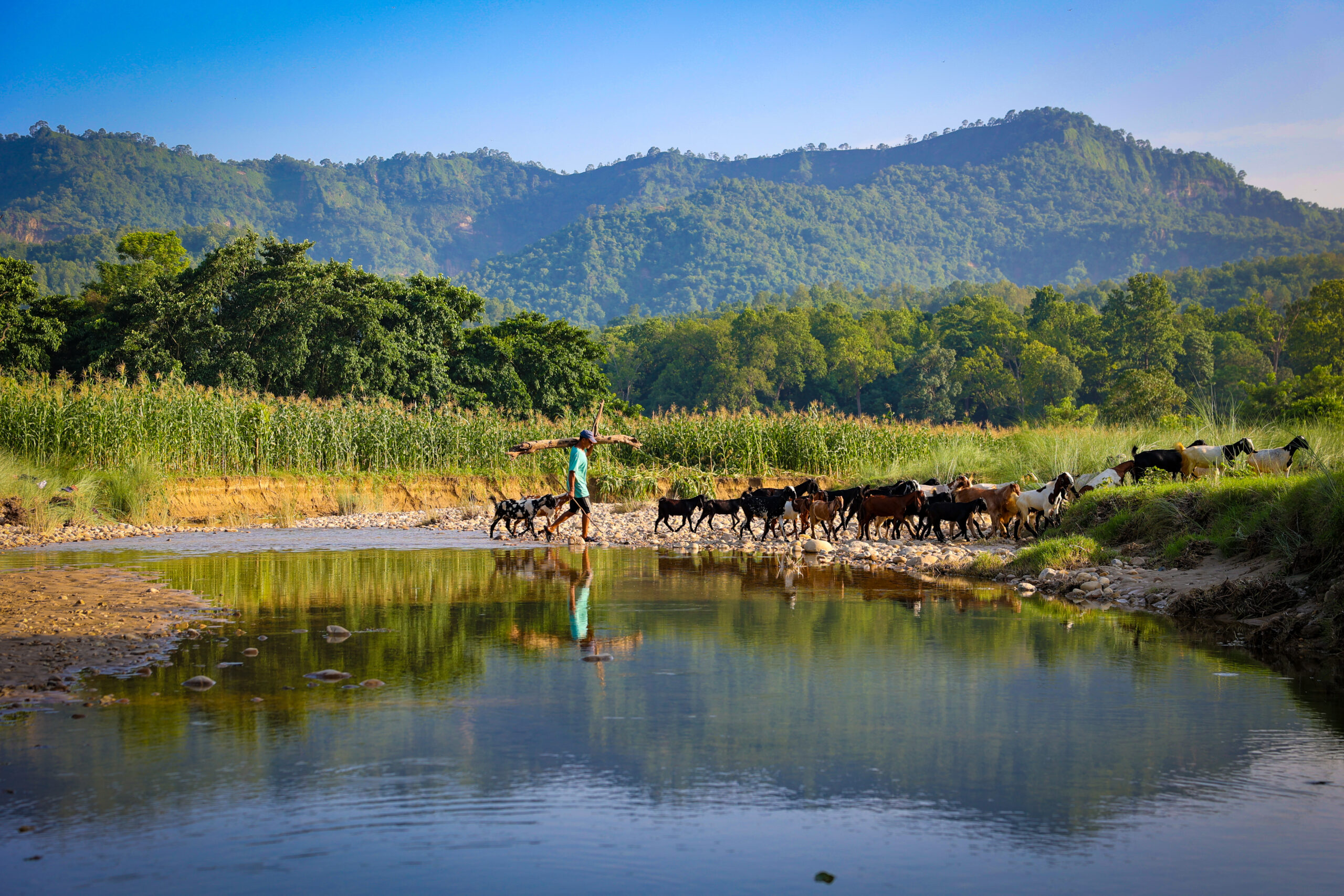
Indeed, at the authority’s level Yam Bahadur Khadka, who serves as the Ward Chairperson of Raptisonari Rural Municipality 1, is emphasizing the importance of the sandbag embankments and seeking disaster risk financing.
“The good thing is, communities are replicating this based on what they’re seeing. If you go to other locations, you will see people replicating this model. It’s not going to be the same, but with social media access, people are learning about how to save themselves from overflow of water coming onto their land.” Yam Bahadur Khadka
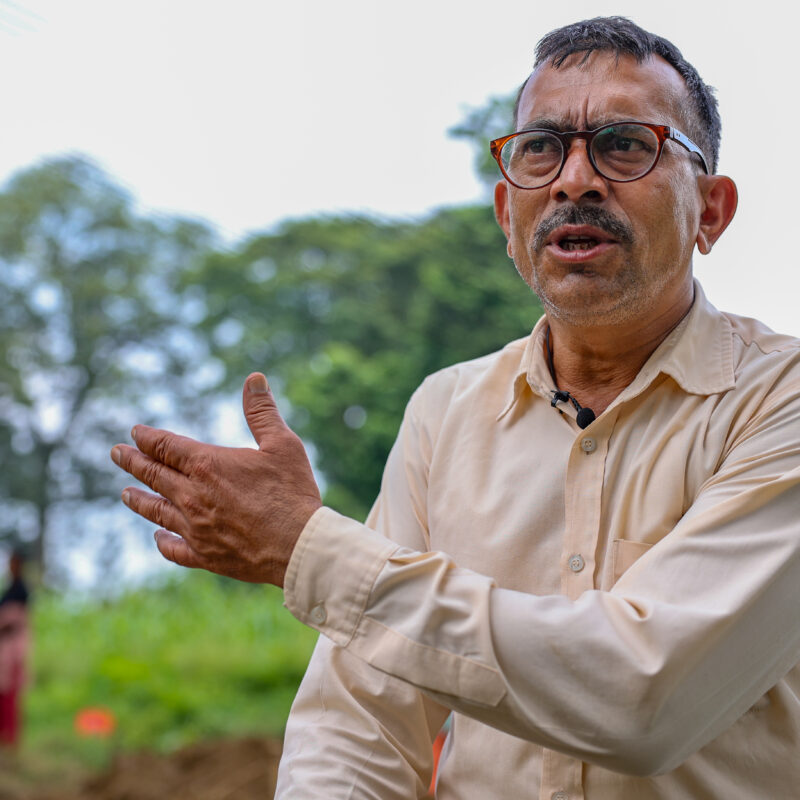
“Before I wasn’t sure about it, but now seeing it work, I feel surprisingly it works and it’s cost effective. So definitely this is something we want to replicate. We are working on the budget and it’s a work in progress. I really want to thank the organizations for doing this kind of innovative practices.” -Yam Bahadur Khadka, Ward Chairperson, Banke
Safeguarding our world for the next generations
Jit is looking towards the future. She said, “Things are slowly improving. I’ve been through hardship, the children are getting bigger, and things are getting better. I think the education, the hard work we put in as parents, is paying off, slowly but surely.”
“I don’t have any grandchildren, but I hope I would have them soon. So, when I have them,
I wish them to have a better life. I don’t want the same trouble that I went through for the next generations.” Jit
